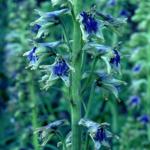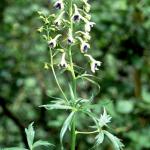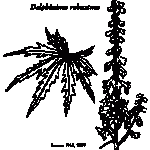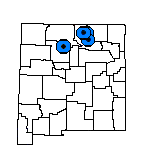Delphinium robustum (Robust Larkspur)
| USFWS | State of NM | USFS | BLM | Navajo Nation | State Rank | Global Rank | R-E-D Code | NMRPTC Status | Strategy Status |
|---|---|---|---|---|---|---|---|---|---|
| SEN | S2 | G2G3 | 1-1-2 | R | SS |
| Overall Conservation Status | Documented Threats | Actions Needed |
|---|---|---|
| WEAKLY CONSERVED | No information |
Additional field searches to determine abundance, distribution, and threats. Study response to forest fire and grazing. Taxonomic work |
*Ewan, J. 1945. A synopsis of the North American species of Delphinium. University of Colorado Studies, Series D 2(2):55-244.
*Warnock, M.J. 1997. Delphinium, pp. 196-240 In: Flora of North America Editorial Committee (eds.). Flora of North America, Magnoliophyta: Magnoliidae and Hamamelidae, Vol. 3. Oxford University Press, New York, New York.
*Beatty, B.L., W.F. Jennings and R.C. Rawlinson. 2004. Delphinium robustum Rydb. (Wahatoya Creek larkspur): A technical conservation assessment. [Online]. USDA Forest Service, Rocky Mountain Region. Available: http://www.fs.fed.us/r2/projects/scp/assessments/delphiniumrobustum.pdf [accessed September 2011]. \ \
For distribution maps and more information, visit Natural Heritage New Mexico





